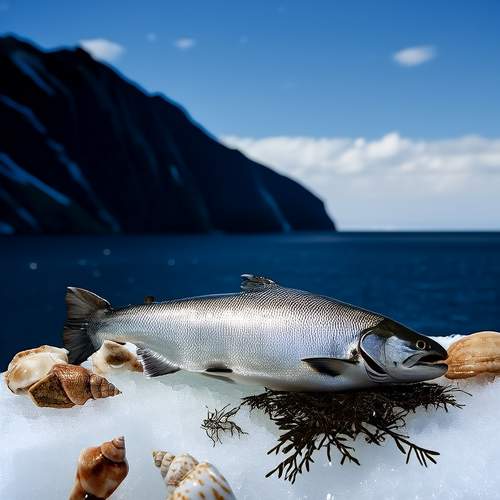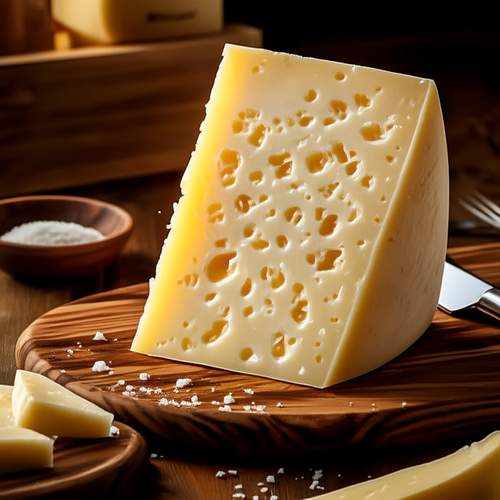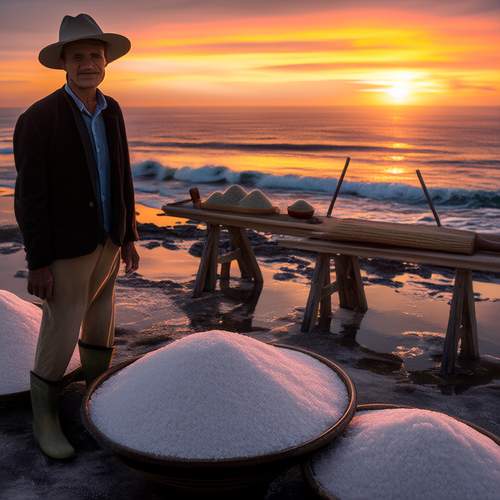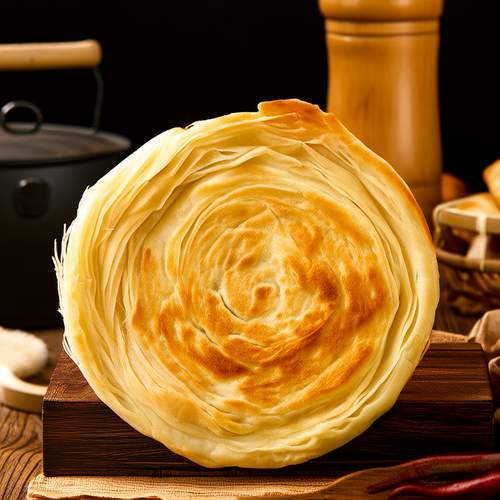The windswept coasts of Brittany have long been revered for their pristine waters and untamed beauty, but beneath the crashing waves lies a hidden treasure that has shaped culinary traditions for centuries. Breton sea salt, harvested through time-honored methods, carries within its crystalline structure a complex mineral signature unlike any other. This isn’t merely sodium chloride—it’s a geological fingerprint, a testament to the region’s unique interplay of ocean currents, granite cliffs, and ancient seabeds.
What sets Breton sea salt apart is its unrefined nature. Unlike industrial table salt stripped of its natural companions, the traditional paludier (salt farmer) method allows the salt to retain over 80 trace minerals absorbed from the Atlantic. Magnesium, potassium, calcium, and even traces of iron weave through each flake, creating a briny depth that chefs describe as "the taste of the ocean itself." The salinity is softer, rounder, with none of the harsh bitterness found in processed salts—a characteristic attributed to the balanced mineral spectrum.
The mineral composition varies subtly between harvests, influenced by seasonal tides and weather patterns. Summer salts, crystallized under intense sun, often show higher magnesium content, lending a faint violet hue and a crisper finish. Winter harvests, slower to form, absorb more potassium and sulfur compounds, resulting in larger, flakier crystals with an umami-rich complexity. This natural variability frustrates industrial food manufacturers but delights artisanal producers who celebrate each batch as a unique expression of terroir.
Geology plays a starring role in this mineral ballet. Brittany’s coastline rests upon some of Europe’s oldest bedrock—Precambrian granite rich in quartz and feldspar. As seawater filters through clay-lined salt marshes, it leaches trace elements from these ancient stones. The resulting brine becomes a mineral soup, with lithium and strontium appearing in detectable amounts alongside more common electrolytes. Studies using mass spectrometry have identified rare earth elements like lanthanum in Breton salt at parts-per-billion levels—insignificant nutritionally but potentially contributing to its celebrated mouthfeel.
Modern nutritional science has begun validating what Breton cooks have known instinctively. The magnesium-to-sodium ratio in Guérande fleur de sel (the prized first harvest) approaches 1:8, compared to 1:40 in Himalayan pink salt. This matters because magnesium acts as a natural buffer against sodium’s hypertensive effects while enhancing cellular hydration. Nutritionists note that Breton salt’s diverse electrolyte profile mirrors that of human blood plasma—an evolutionary echo of our oceanic origins.
The harvesting technique itself becomes a mineral curator. Wooden tools are favored over metal to prevent contamination. Shallow clay ponds allow precise control over crystallization depth, with deeper pans yielding salt higher in calcium sulfate. Even the famous Breton winds contribute—their constant agitation prevents heavy metals from settling, resulting in remarkably pure final products. Laboratory analyses consistently show Breton salts containing less than 0.5% impurities, outperforming many bottled mineral waters in elemental purity.
Artisans have learned to "read" the salt’s mineral content through sensory cues. A blue-gray tint indicates higher magnesium, while golden flecks suggest iron oxide carried from nearby cliffs. The most sought-after batches produce a distinct crunch between the teeth—not from hardness, but from the hollow, pyramidal crystal structures formed when trace minerals guide crystalline growth. These textures dissolve differently on the tongue, releasing flavors in waves rather than all at once.
Contemporary chefs leverage this mineral diversity creatively. Pastry chefs value low-sodium batches for caramel work, where trace potassium prevents crystallization. Charcutiers seek out sulfur-rich salts for dry-curing hams, as these compounds act as natural preservatives. Perhaps most remarkably, Breton salt’s mineral complexity allows it to amplify sweetness in desserts—a phenomenon food scientists attribute to zinc and manganese content activating taste receptors.
As global consumers grow increasingly discerning about traceability and nutrient density, Breton sea salt has transitioned from kitchen staple to gastronomic artifact. Michelin-starred menus now list salt harvest dates alongside vintage wines, while laboratories employ neutron activation analysis to map mineral fingerprints for authenticity verification. In an era of industrialized food systems, these glistening crystals stand as a reminder that sometimes, the most profound flavors emerge not from human ingenuity, but from the patient alchemy of sea, stone, and time.

By /May 26, 2025

By /May 26, 2025

By /May 26, 2025

By /May 26, 2025

By /May 26, 2025

By /May 26, 2025

By /May 26, 2025

By /May 26, 2025

By /May 26, 2025

By /May 26, 2025

By /May 26, 2025

By /May 26, 2025

By /May 26, 2025

By /May 26, 2025

By /May 26, 2025

By /May 26, 2025

By /May 26, 2025

By /May 26, 2025

By /May 26, 2025

By /May 26, 2025